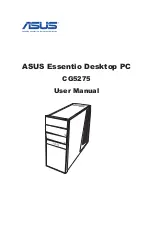
Overview of BIOS Features
55
3.5.1
Language Support
The BIOS Setup program and help messages are supported in US English. Check the Intel web
site for support.
3.6
BIOS Recovery
It is unlikely that anything will interrupt a BIOS update; however, if an interruption occurs, the
BIOS could be damaged. Table 22 lists the drives and media types that can and cannot be used
for BIOS recovery. The BIOS recovery media does not need to be made bootable.
Table 22. Acceptable Drives/Media Types for BIOS Recovery
Media Type
(Note)
Can be used for BIOS recovery?
Hard disk drive (connected to SATA or USB)
Yes
USB flash drive
Yes
USB diskette drive (with a 1.4 MB diskette)
No (BIOS update file is bigger than 1.4 MB size limit)
NOTE
Supported file systems for BIOS recovery:
NTFS (sparse, compressed, or encrypted files are not supported)
FAT32
FAT16
FAT12
For information about
Refer to
BIOS recovery
http://www.intel.com/support/motherboards/desktop/sb/CS-034524.htm
3.7
Boot Options
In the BIOS Setup program, the user can choose to boot from a hard drive, optical drive,
removable drive, or the network. The default setting is for the optical drive to be the first boot
device, the hard drive second, removable drive third, and the network fourth.
NOTE
Optical drives are not supported by the onboard SATA connectors. Optical drives are supported
only via the USB interfaces.
3.7.1
Network Boot
The network can be selected as a boot device. This selection allows booting from the onboard
LAN or a network add-in card with a remote boot ROM installed.








































